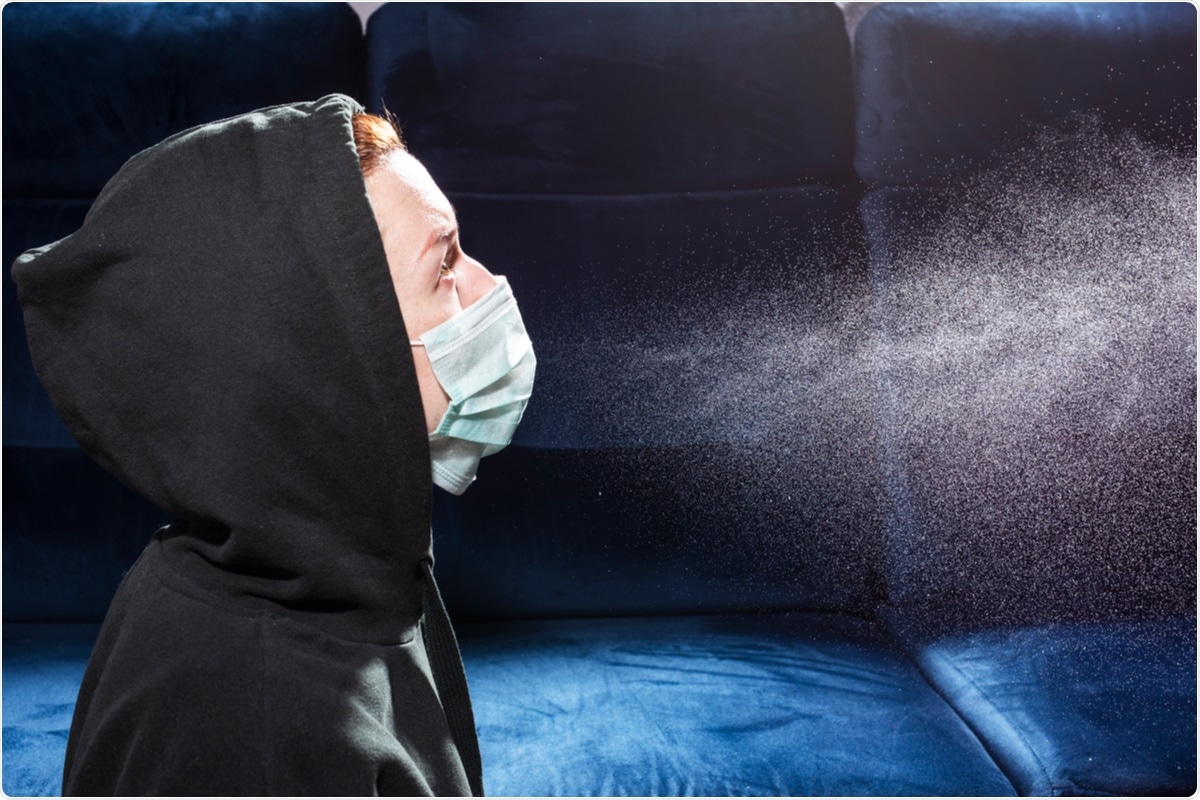A team of scientists from India has recently revealed that inside a closed room, the chance of airborne severe acute respiratory syndrome coronavirus disease 2 (SARS-CoV-2) infection directly depends on the number of symptomatic coronavirus disease 2019 (COVID-19) patients in the room and the duration of exposure. Moreover, they observed that in neutral environmental conditions, distant spreading of the virus from COVID-19 patients is less likely to occur, which signifies the importance of physical distancing in preventing viral spread. The study is currently available on the medRxiv* preprint server.


 This news article was a review of a preliminary scientific report that had not undergone peer-review at the time of publication. Since its initial publication, the scientific report has now been peer reviewed and accepted for publication in a Scientific Journal. Links to the preliminary and peer-reviewed reports are available in the Sources section at the bottom of this article. View Sources
This news article was a review of a preliminary scientific report that had not undergone peer-review at the time of publication. Since its initial publication, the scientific report has now been peer reviewed and accepted for publication in a Scientific Journal. Links to the preliminary and peer-reviewed reports are available in the Sources section at the bottom of this article. View Sources
Background
Severe acute respiratory syndrome coronavirus disease 2 (SARS-CoV-2), the causative pathogen of COVID-19, is known to primarily spread from person to person via respiratory droplets. However, there are studies claiming that an airborne transmission of SARS-CoV-2 is possible via viral aerosols generated by COVID-19 patients. In hospitals with COVID-19 positive patients, SARS-CoV-2 contamination of surfaces and environment has also been reported. In closed environments with strong directional airflow, the virus-containing droplets have been shown to spread more than 2 meters.
Current study
The current study was designed to thoroughly understand the transmission dynamics of SARS-CoV-2 and determine whether healthcare workers and hospital visitors are at higher risk of airborne getting SARS-CoV-2 infection.
To conduct the experiments, the scientists collected air samples from 6 different hospitals where COVID-19 patients were being treated. For sample collection, they have chosen both COVID-19 and non-COVID-19 treatment areas of the hospitals.
In addition, they conducted closed-room controlled experiments to investigate how far viral aerosols/droplets can travel and how long these particles can sustain in the air. In this set of experiments, asymptomatic or mildly symptomatic patients were asked to sit, talk over the phone, or interact with each other inside a closed room. To check the longevity of SARS-CoV-2-containing particles in the air, the samples were collected from the closed room before the arrival of patients, immediately after their departure from the room, and after 2 – 6 hours of their departure. To check the distance traveled by SARS-CoV-2-containing particles, the samples were collected from distances between 4 – 12 feet from COVID-19 patients.
Important observations
SARS-CoV-2 in hospital air
Of 64 air samples collected from different areas of the hospitals, only 4 tested positive for SARS-CoV-2. Of 4 positive samples, 2 were obtained from 2 different COVID-19 intensive care units (ICU); 1 was from a COVID-19 general ward, and 1 was from a nursing station.
SARS-CoV-2 in closed-room air
Of the 17 air samples collected from different closed-room conditions, only one tested positive. The SARS-CoV-2-positive sample was obtained from the closed room immediately after the departure of three mildly symptomatic COVID-19 patients who stayed in the room for about an hour.
Study significance
The study indicates that SARS-CoV-2 can be present in the air circulating in COVID-19 care units of hospitals and that the risk of airborne transmission of SARS-CoV-2 positively correlates with the number of COVID-19 patients in a room. In contrast, the possibility of SARS-CoV-2 air contamination is almost negative in non-COVID areas, highlighting the need for separating COVID wards from non-COVID wards in hospitals to reduce the risk of SARS-CoV-2 infection among healthcare workers and hospital visitors.
The SARS-CoV-2-positive samples obtained from hospital wards were collected from at least 10 feet distance from the nearest patient, indicating that the long-term presence of COVID-19 patients in an enclosed environment increases the risk of air contamination.
In an enclosed neutral environment maintaining ambient temperature and humidity without apparent airflow, SARS-CoV-2-containing aerosols/droplets do not seem to travel longer distance as no SARS-CoV-2-positive air sample has been obtained from the closed room where mildly symptomatic or asymptomatic COVID-19 patients stayed for a short duration (20 minutes). This indicates that an exposure to COVID-19 patients for a short duration does not increase the risk of infection even inside a closed room. However, according to the study findings, the risk of airborne SARS-CoV-2 transmission increases when symptomatic patients stay in a closed environment for a longer period of time (about an hour).
Overall, the study findings highlight that airborne transmission of SARS-CoV-2 is possible inside a closed room and in COVID-19 hospitals. Thus, to reduce the risk of SARS-CoV-2 infection, particularly in enclosed environments, it is important to maintain appropriate physical distancing, limit the duration of exposure/stay, and to wear a mask.

 This news article was a review of a preliminary scientific report that had not undergone peer-review at the time of publication. Since its initial publication, the scientific report has now been peer reviewed and accepted for publication in a Scientific Journal. Links to the preliminary and peer-reviewed reports are available in the Sources section at the bottom of this article. View Sources
This news article was a review of a preliminary scientific report that had not undergone peer-review at the time of publication. Since its initial publication, the scientific report has now been peer reviewed and accepted for publication in a Scientific Journal. Links to the preliminary and peer-reviewed reports are available in the Sources section at the bottom of this article. View Sources